The mole rat damage in the hedge
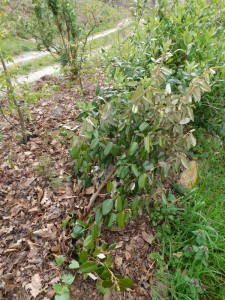 You have got to be kidding. Another eleagnus shrub in the hedge succumbs.
You have got to be kidding. Another eleagnus shrub in the hedge succumbs.
I was mooching up beyond the potting shed en route to the asparagus patch (slow, slow, only a few poking above the ground.)
And I noticed something odd with the hedge.
Those effing mole rats have been at it again. I am so, so cross. Beastly creatures.
A slug or a snail may munch a newly sown broad bean or pea shoot. But these rodents are taking down established shrubs I have been growing for years.
It’s the beaver equivalent of a losing a full grown tree to one animal’s voracious teeth.
This is my third eleagnus shrub to be eaten. And I have great fears for the largest and most established of my hedge shrubs. 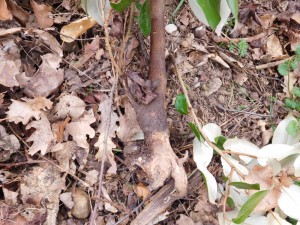
And how is it eaten? The mole rats eat the roots.
Sample here. Not much left to hold up this large shrub.
So it has gone onto the compost heap and it’s time for me to come indoors and do some research.
I need to stop moaning and learn about this enemy of mine. This is war.
So. Internet. The Mole Rat – arvicola terrestris. And before you suddenly sit up straight and think, ‘What? You have a garden overrun by water voles?’ The answer is the water vole (Ratty in Wind in the Willows) has now been renamed arvicola amphibious.

In Africa, they have the naked African mole rat which is affectionately (I don’t think so) called a sand puppy. But they are called Heterocephalus glaber, something completely differe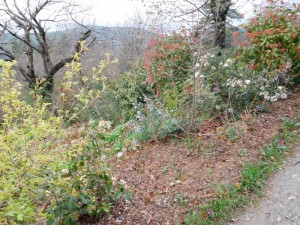 nt. And that’s a relief. Have you ever done an internet search of a naked African mole rat? Don’t do it close to bed time; they will haunt your dreams. But the amazing thing is the naked mole rat may eventually save mankind from cancer. See this link.
nt. And that’s a relief. Have you ever done an internet search of a naked African mole rat? Don’t do it close to bed time; they will haunt your dreams. But the amazing thing is the naked mole rat may eventually save mankind from cancer. See this link.
- http://www.bbc.co.uk/news/health-22961694
Scientists are all in a lather about the fact naked mole rats don’t go on to develop cancer. So they are probing hard at their genes and trying to work out why.
And meanwhile, poor little gardener (that will be me) is probing the mole runs in th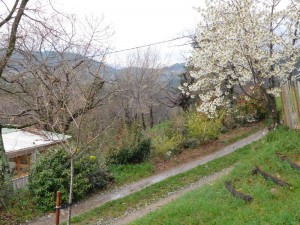 e hedge with a sharp stick. Cat – the mouser – is snoozing nearby and ought to be hunting these things for me.
e hedge with a sharp stick. Cat – the mouser – is snoozing nearby and ought to be hunting these things for me.
So how am I going to get rid of these rodents? And believe me, I have learned that I’m not dealing with one or two, but a colony. A reproductive queen and a number of siring males.
There are traps. There is rat poison (if you could get into the runs) and there is the solution that I am going to try first: sound.
The device I have orderened is a Reddix Pest Repelling plug in device. It supposedly works by emitting short wavelength, high frequency sound waves which will hopefully really annoy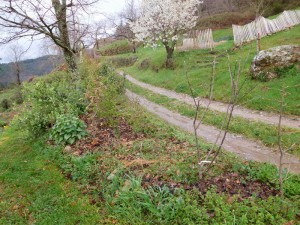 the rodents, the mice, the mole rats and as a bonus the pine martens in our roof.
the rodents, the mice, the mole rats and as a bonus the pine martens in our roof.
The sound waves will change every few days so the rodents don’t get used to the annoying noise.
It comes with rave reviews from Nicolas the gardener’s father who has used one successfully in his garden. But I have hesitated for months as I am worried these sound waves will disturb the bees and other pollinating insects that are hard at work in my vegetable garden.
 I can’t find out if this is true. Everyone is gushing about the product, not about the drawbacks. About as gushy as the scientists are about naked mole rats.
I can’t find out if this is true. Everyone is gushing about the product, not about the drawbacks. About as gushy as the scientists are about naked mole rats.
So I will have to plug it into the power supply in the open barn and see if the device works. It supposedly has a radius of 200m which ought to incorporate all parts.
I have doubts about the penetration power through the thick walls of the guest house. But let’s be honest, it’s the garden rodents that are exercising me right now, rather than pine martens in the roof.
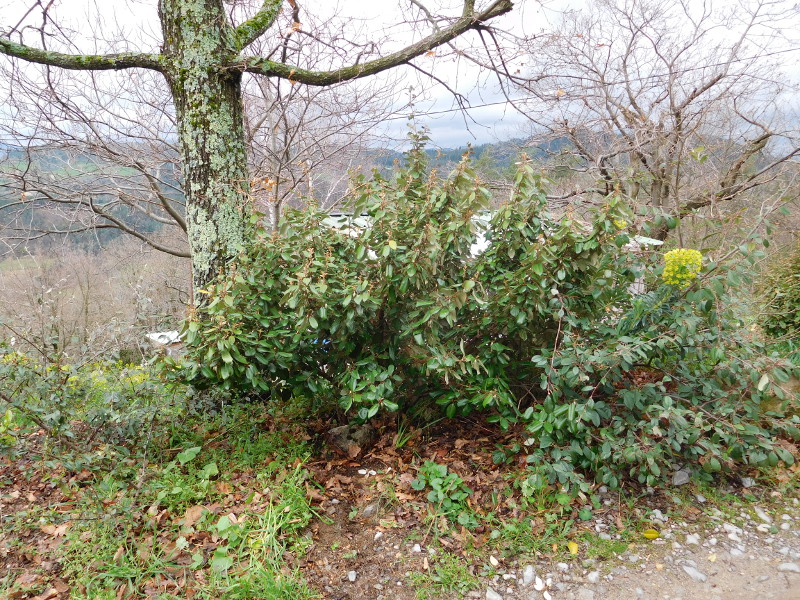
1st October 2020 @ 12:44 pm
Dear Lindy,
My name is Nina Šramel from Slovenian Forest Institute. We are currently working on a monograph on pests in forests, which will be put online with free access in the Slovenian language. I was looking for photographs of damage made by the mole rat and found one on your website.
I was wondering if we could use your photo for our monograph? We are interested in the one where we can see the damage on the shrub.
Kind regards,
Nina Šramel
1st October 2020 @ 4:05 pm
Dear Ms Sramel
I would be delighted to give you the image for your monograph. Please credit the photo Lindy Sinclair.
Best of luck. Those mole rats were such a pest! I lost a young mulberry tree this year as well. But that shot of the chewed roots is a perfect example of a healthy young hedge plant (elaeagnus x ebbingei) being eaten.
Best wishes Lindy